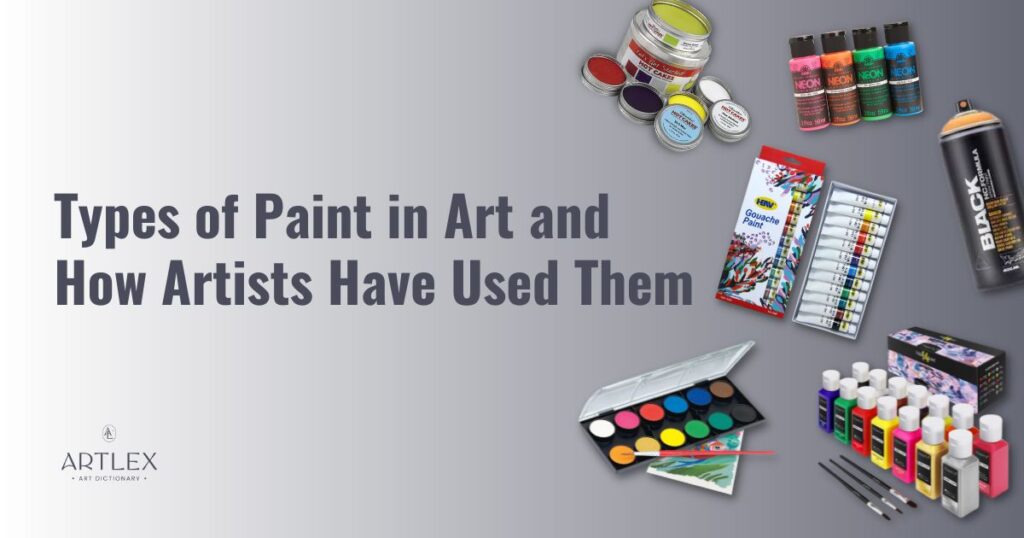
Paint is an essential medium in art, used by artists to create a wide range of visual effects and styles. But with so many different types of paint available, it can be overwhelming for artists to choose the right one for their artwork.
This article will provide a comprehensive overview of the different types of paint in art and how they are used. It will explore the characteristics, advantages, and disadvantages of every kind of paint. It will also include notable movements, art style, and artists with their artworks associated with each type of paint.
How Is Paint Made?
Paint is made by mixing colored pigments with a binder, such as oil or water, to create a smooth and consistent mixture that can be applied to a surface. The pigments used in a paint can be derived from natural sources, such as minerals and plants, or they can be synthesized chemically in a laboratory. The binder holds the pigments together to help the paint adhere to the painted surface.
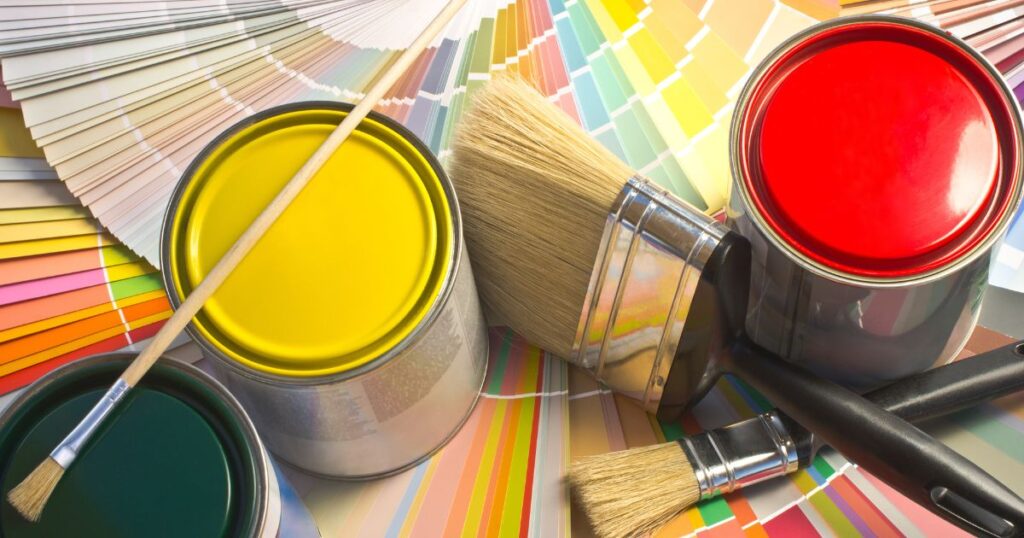
Other ingredients, such as solvents that adjust the paint’s consistency or additives that improve its performance or durability, may also be added to the mixture. The final mixture is then packaged and sold as a liquid or a dry powder that can be mixed with a binder before use.
12 Types of Paint in Art
Now that we’ve looked at how paint is made let’s delve into the different types used in art.
Acrylic
Acrylic paint is a fast-drying paint made with a synthetic polymer binder. It is known for its versatility and ability to mimic the appearance of oil paints, making it a popular choice for artists working in various styles and techniques. It is also water-soluble, which means it can be thinned with water and easily cleaned up with soap and water.
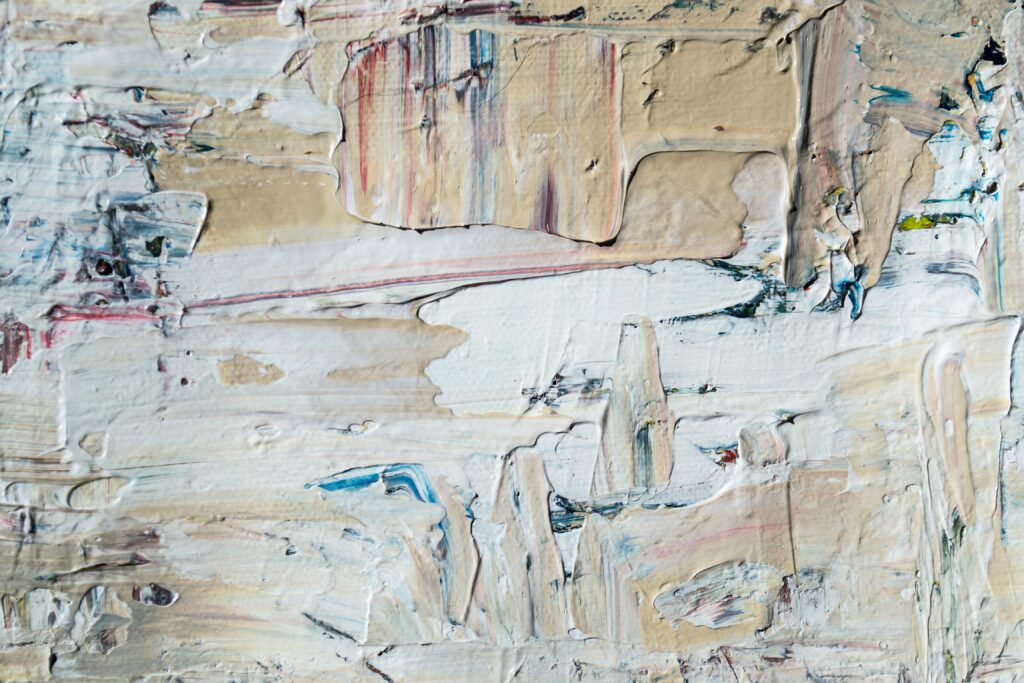
Acrylic paint is also highly pigmented, meaning it has an intense, vibrant color when applied to a surface. It can be thinned with water to create a translucent wash or used in a thick, opaque manner to create texture and impasto effects.
Notable movements and styles associated with acrylic paint include abstract painting expressionism, pop art, and contemporary realism. Some examples of prominent artists with their art pieces showcasing acrylic paint’s unique qualities include David Hockney’s vibrant swimming pool paintings and Chuck Close’s photorealistic portraits.
Blacklight
Blacklight paint is a type of paint that glows under black light, making it a popular choice for light art installations, murals, and other works that are intended to be viewed in low-light conditions. It is available in various colors, from neon hues to more muted shades, allowing artists to create a wide range of effects.
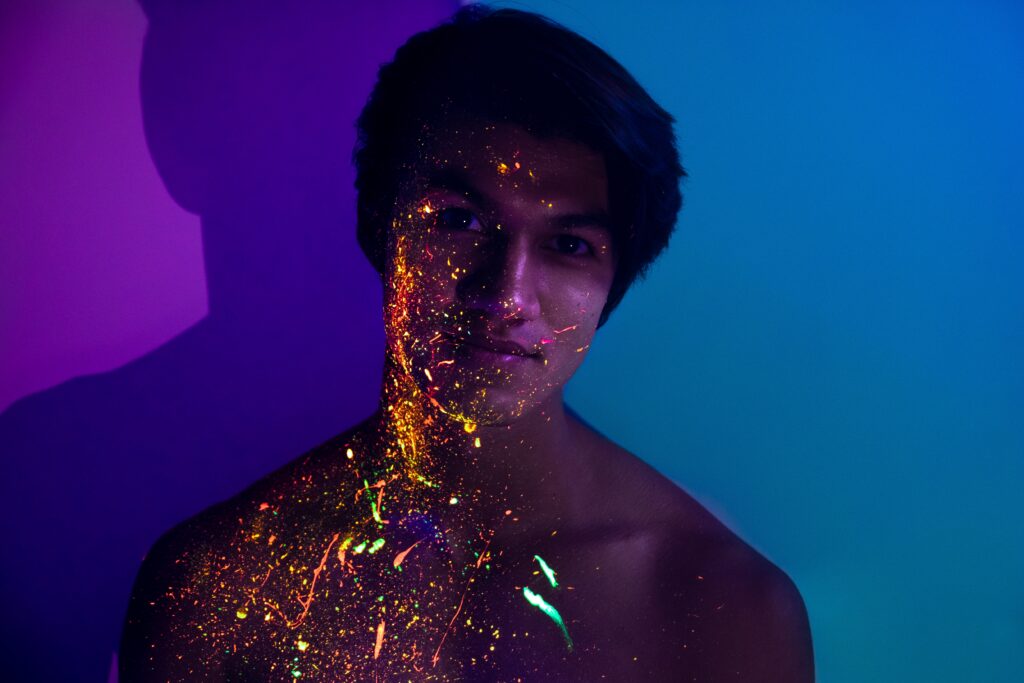
One of the main advantages of blacklight paint is that it creates a unique visual effect that cannot be achieved with regular paint. When viewed under a black light, the paint appears to glow and emit a bright, radiant color, adding an otherworldly, surreal quality to the artwork.
Light art, surrealism, and psychedelic art are the notable movements and painting styles associated with blacklight paint. Prominent artists and some examples of art pieces showcasing blacklight paint’s unique qualities include Dan Flavin’s fluorescent light sculptures, and Haim Steinbach’s neon-lit display cases.
Body
Body paint is a thick, opaque paint with a heavy pigment load. It is often used for texture and impasto effects in painting techniques, as well as for body painting style, costume design, and special effects makeup. Body paint is available in various colors and can be used with other materials, such as glitter or rhinestones, to create more complex effects.

One of the main advantages of body paint is that it can create a wide range of textures and effects on the skin or a surface. It can be applied thickly to create a raised, sculptural quality or thinned out to create a more subtle, textured finish.
Performance art, body art, and special effects makeup are the styles associated with body paint. Prominent artists and some examples of art pieces showcasing body paint’s unique qualities include Yves Klein’s “Anthropometry” performances and Kazuo Ohno’s dance performances.
Encaustic
Encaustic paint is a type of paint made with pigments mixed into hot beeswax. It has a luminous, translucent quality and a slow drying time, making it a unique and challenging medium for artists to work with.

One of the main advantages of encaustic painting is its luminous, glowing quality, which creates a sense of depth and dimension in the artwork. It is also highly malleable, allowing artists to carve, scrape, and texture the paint while it is still liquid. However, encaustic painting requires specialized tools and equipment, such as a heated palette or encaustic iron, to work with it, and it can be challenging to achieve a consistent result due to its slow drying time.
Notable movements and styles associated with encaustic paint include ancient Greek and Roman art and the encaustic revival movement of the 20th century. Prominent artists and their art pieces showcasing the unique qualities of encaustic paint include Jasper Johns’ “Flag” paintings and Brice Marden’s monochromatic abstractions.
Fabric
Fabric paint is a type of paint specifically formulated for use on fabric. It is often used to decorate clothing, accessories, and other textile items and is available in a wide range of colors and finishes, including matte, satin, and metallic.
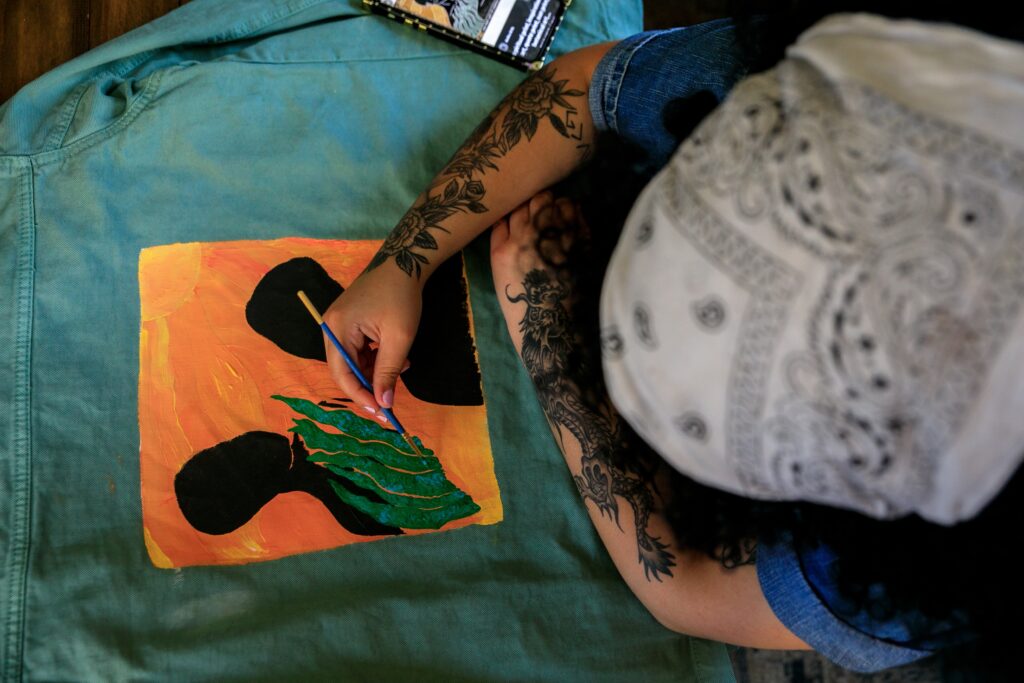
One of the main advantages of fabric paint is that it allows artists to create custom designs and patterns on fabric items, adding a personal touch to their wardrobe or home decor. However, it is essential to note that fabric paint is not as permanent as regular paint and may fade or crack over time, exceptionally if it is not cared for properly.
The styles and movements associated with fabric paint include streetwear fashion, DIY culture, and costume design. Jean-Michel Basquiat’s graffiti-inspired clothing and Wiley’s regal portrait robes are examples of art pieces showcasing the unique qualities of fabric paint.
Gouache
Gouache paint is an opaque watercolor with a higher pigment load and a matte finish. It is often used for illustrations, design work, and more traditionally acceptable art applications.
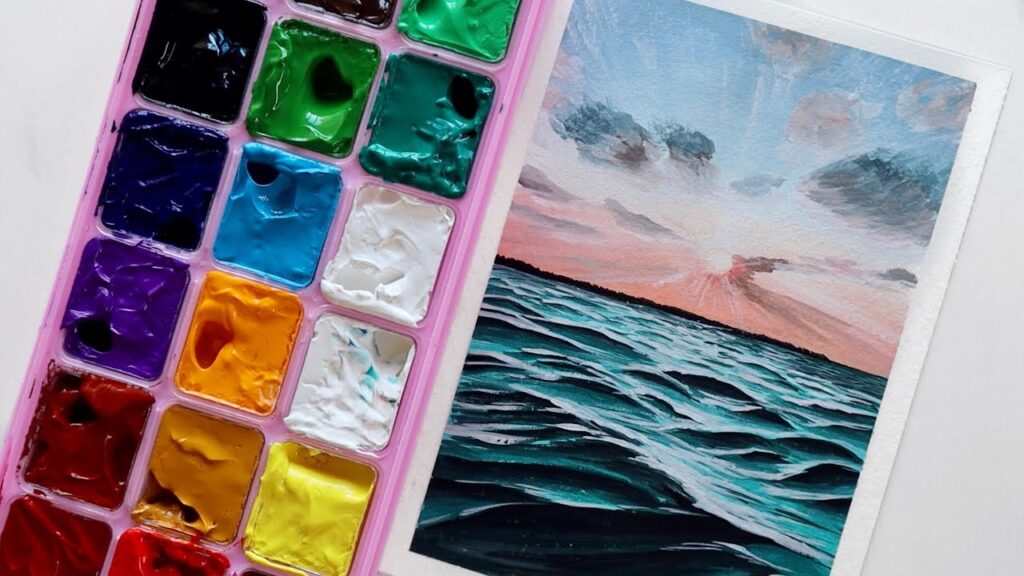
One of the main advantages of gouache paint is its opacity, which allows artists to create solid, vibrant colors that are not transparent like watercolor. However, gouache paint can be challenging to achieve subtle gradations and washes of color, as it tends to produce more solid, flat areas of color. It is also not as flexible as watercolor, as it cannot be reactivated with water once it has dried.
Illustration, commercial, and traditional fine art are the notable movements and styles associated with gouache paint. Examples of prominent artists and their art pieces for gouache paint include Edward Hopper’s urban landscapes and David Hockney’s Californian pool scenes.
Ink Wash
Ink wash painting is a type of paint made with water and ink. It is known for its ability to create delicate, transparent washes of color, making it a popular choice for calligraphy and other brushwork techniques.
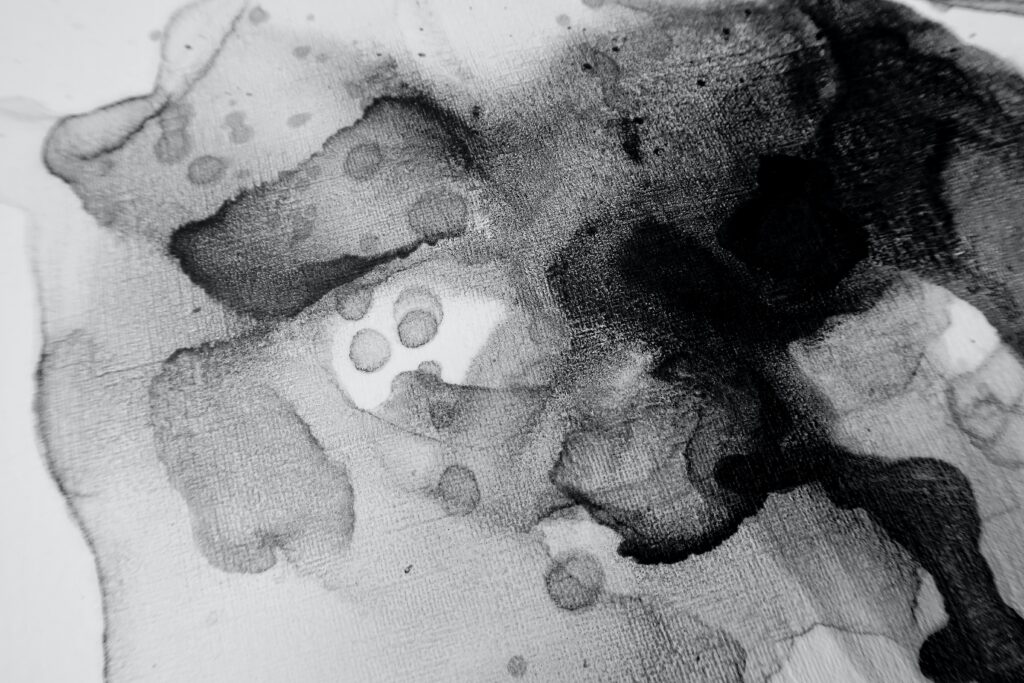
One of the main advantages of ink wash painting is its ability to create a wide range of tones and values with just a single color. However, ink wash painting is not as vibrant or pigmented as other paints and can be challenging to control, as it can quickly spread and feather when applied to a wet surface.
Notable movements and styles associated with ink-wash paint include East Asian brushwork and calligraphy. Prominent ink-wash paint artists and their work include Sesshu Toyo’s landscape scrolls and Euan Uglow’s figure paintings.
Oil
Oil paint is a slow-drying paint made with pigments suspended in a medium of drying oil, such as linseed or poppyseed oil. It is known for its ability to create rich, luminous colors and its versatility in various art styles and techniques.
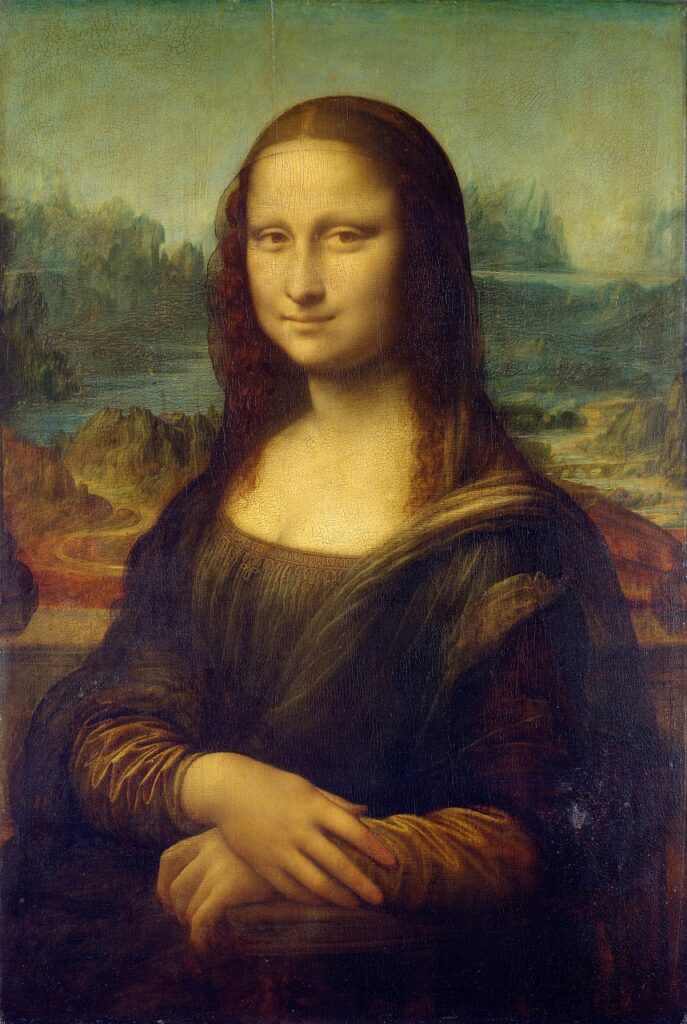
One of the main advantages of oil painting is its ability to create a wide range of effects, from smooth, glossy surfaces to thick, textured impasto. However, oil painting has a slow drying time, which can be frustrating for artists who prefer to work quickly or layer their paintings rapidly.
Renaissance, Baroque, and Impressionist are the notable movements and art styles associated with oil paints. Prominent artists and their famous paintings showcasing oil paint’s unique qualities include Leonardo da Vinci’s “Mona Lisa,” Rembrandt’s self-portraits, and Claude Monet’s Impressionist landscapes.
Pastel
Pastel paint is a soft, powdery paint with a high concentration of pigment and minimal binder. It is available in a wide range of colors and is known for its delicate, luminous quality and ability to create subtle gradations of color.
Pastel paint can create a wide range of tones and values with just a single color. By layering and blending different pastel sticks, artists can create complex, nuanced compositions. However, pastel paint is not as permanent as oil or acrylic paint and is prone to smudging, fading, and discoloration.
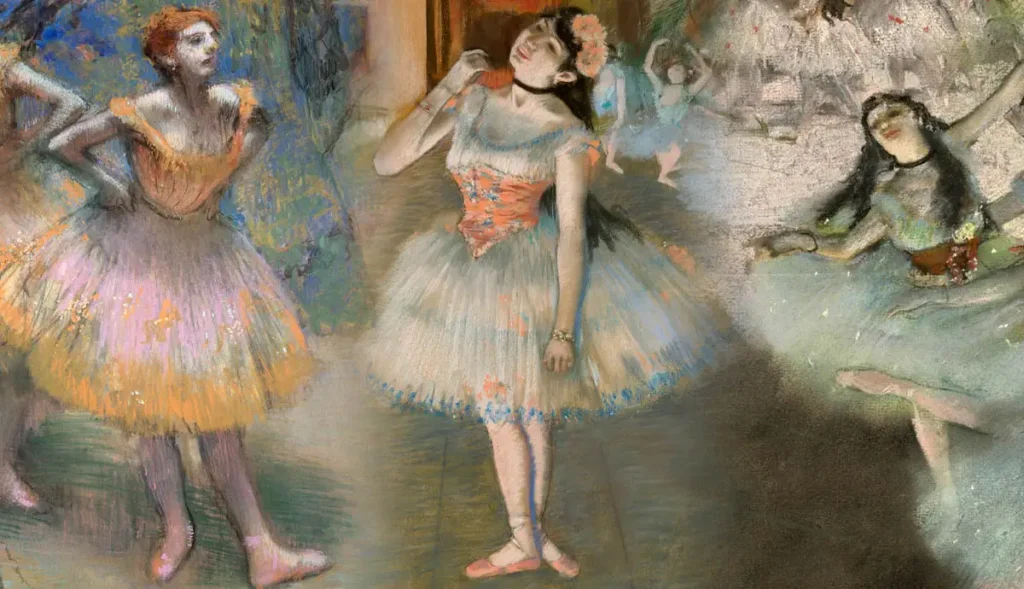
Rococo, Romanticism, and Impressionism are some styles and movements associated with pastel paint. Edgar Degas’ ballet dancers and Mary Cassatt’s mother and child portraits are some prominent artwork pieces showcasing the unique qualities of pastel paint.
Spray
Spray paint is a type of paint that is applied to a surface using a can fitted with a spray nozzle. It is known for its quick drying and even application, making it a popular choice for murals, graffiti, and other types of street art.
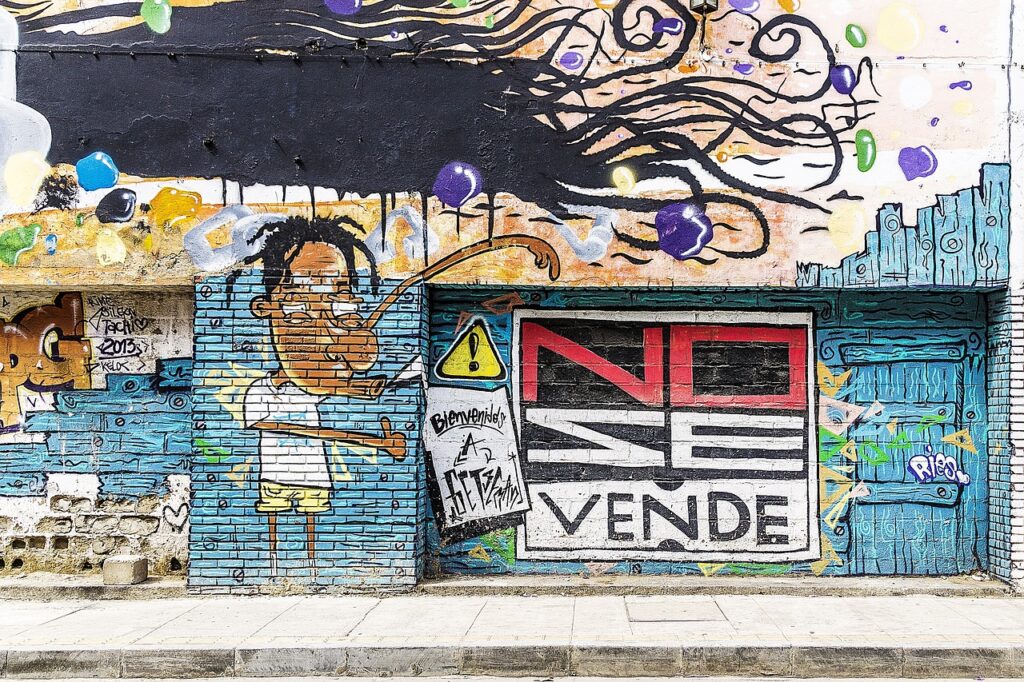
Spray paint’s advantages are its speed and ease of use. It can be applied quickly and evenly to a large surface, making it a good choice for artists working on a tight deadline or who need to cover a large area with a single color. However, spray paint is not as permanent as oil or acrylic paints and is prone to fading and discoloration over time.
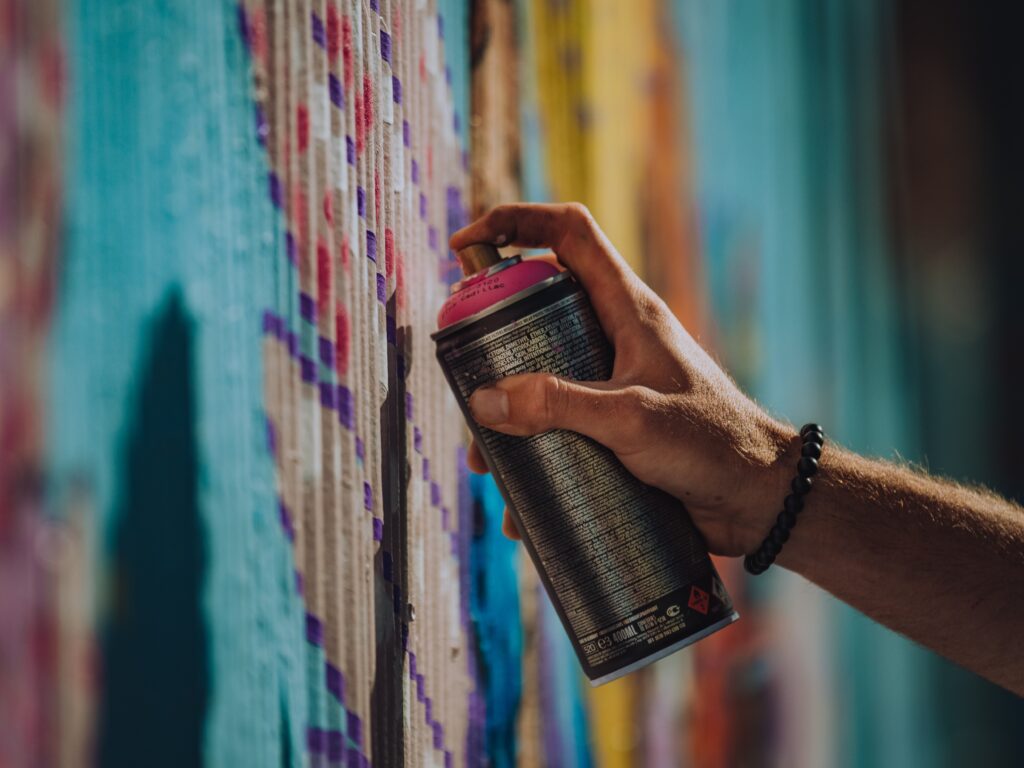
Some notable styles and movements associated with spray paint are street art, graffiti, and outsider art. Some examples of artists and their art pieces showcasing spray paint’s unique qualities include Banksy’s anonymous street art and Jean-Michel Basquiat’s graffiti-inspired paintings.
Tempera
Tempera paint is a fast-drying paint made with pigments mixed with a water-soluble binder, such as egg yolk or casein. It has a matte finish and is known for its ability to create bright, flat areas of color.
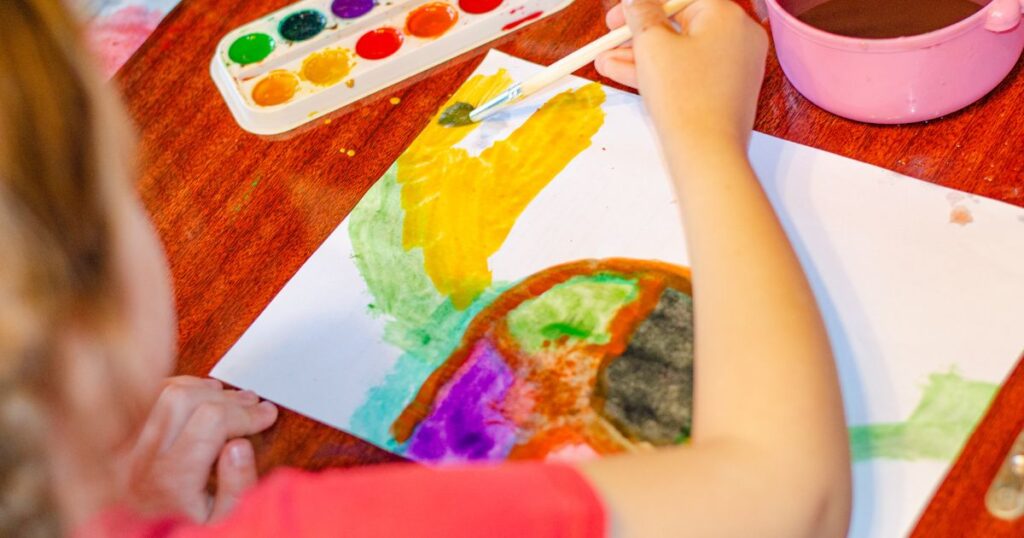
Tempera paint is relatively non-toxic and easy to clean up, making it a popular choice for educational and children’s art activities. Tempera paint is also relatively inexpensive and widely available, making it a good choice for artists on a budget. However, tempera paint is not as versatile as other paints, as it cannot be thinned with water or used to create thick, textured effects.
Notable movements and styles associated with tempera paint include medieval art, icon painting, and illustration. Some prominent artists and examples of their art pieces showing tempera paint’s unique qualities include Giusto de’ Menabuoi’s frescoes and Jan van Eyck’s altarpieces.
Watercolor
Watercolor paint is a transparent paint made with pigments suspended in a medium of water and a binder, such as gum arabic. It is known for its delicate, luminous quality and ability to create subtle gradations of color.
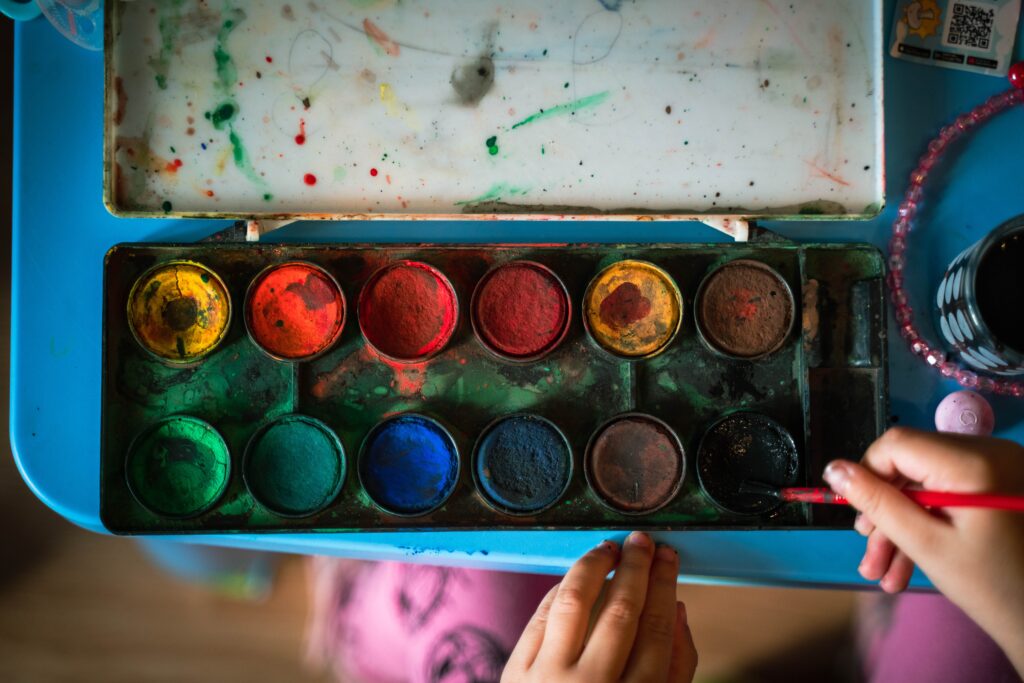
Watercolor paint can create a wide range of tones and values with just a single color. By layering and blending different washes of color, artists can create complex, nuanced compositions. But, watercolor paint is not as permanent as oil or acrylic paints and is prone to fading and discoloration over time. It is also not as versatile as other paints, as it cannot create thick, textured effects or cover large areas with a single color.
Impressionist movement, botanical illustration, and landscape painting techniques are some examples of styles and movements in watercolor painting techniques. Examples of prominent artists and their artworks using watercolor paint include John Singer Sargent’s portraits and Georgia O’Keeffe’s abstract florals.
How Are Paints Different From Each Other?
Paints can differ from each other in several ways, including the following:
Texture
The texture of a paint refers to its smoothness or roughness. Some paints, such as oil paints, have a thick, buttery texture that can be used to create impasto effects, while others, such as watercolor paint, have a thin, liquid consistency.
Solubility
The solubility of a paint refers to its ability to dissolve in a liquid. Some paints, such as watercolor paint, are highly water-soluble and can be thinned with water or mixed with other water-based media. Other paints, such as oil paints, are not water-soluble and require solvents to thin or clean up.
Color
The color of the paint will depend on the type of pigment used in the paint. Some pigments are more vibrant and intense than others, while others are more subtle and muted.
Viscosity
The viscosity of a paint refers to its thickness or thinness. Some paints, such as acrylic paint, are relatively thick and can create texture and impasto effects. In contrast, others, such as watercolor paint, are thinner and are better suited for creating delicate, transparent washes
Smell
Some paints, such as oil paints, have a strong smell due to using solvents or other chemicals in the binder. Other paints, such as watercolor paint, have a mild smell none altogether. The smell of paint can be an essential consideration for artists who are sensitive to certain odors or work in small or poorly ventilated spaces.
Overall, the differences between paints are primarily determined by the type of pigment, binder, and other ingredients used in the paint. These factors can influence the paint’s texture, solubility, color, viscosity, and smell, as well as its drying time, permanence, and other characteristics. Understanding these differences can help artists choose the right paint for their needs and goals.
What Paint Is Best for a Beginner?
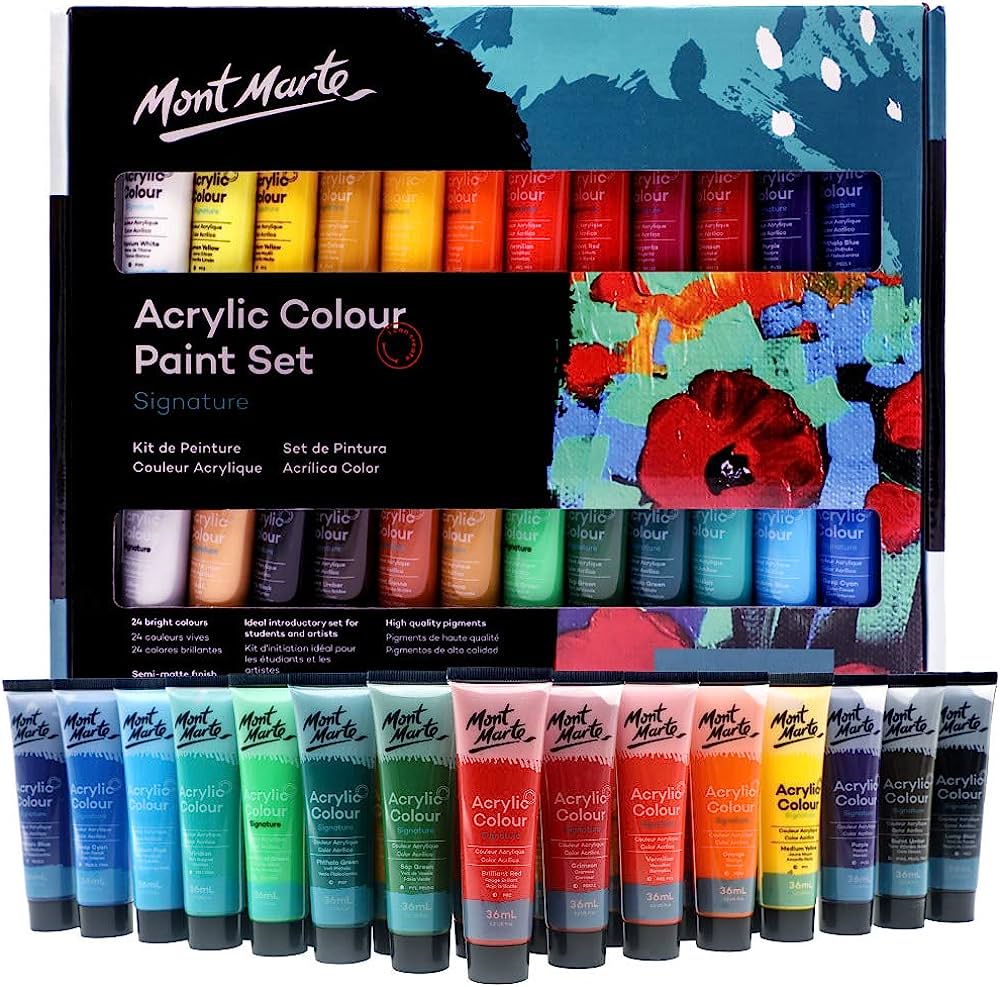
Acrylic paint is often considered a good choice for beginners because it is relatively budget-friendly, easy to clean up, and widely available. Acrylic paint dries quickly, which makes it a good choice for artists who want to work swiftly or layer their paintings rapidly. It is also versatile, meaning that it can be thinned with water or used straight from the tube to create a wide range of effects, from smooth, glossy surfaces to thick, textured impasto.
Frequently Asked Questions
These are the frequently asked questions regarding the types of paint.
What is the most expensive type of paint?
Oil paint is generally considered the most expensive type of paint because it requires a higher quality of pigment and binder, and it takes longer to dry, which can increase the overall cost of the paint.
Can I mix different kinds of paint?
Yes, mixing different types of paint is generally possible, but the results may vary depending on the paint being mixed and the desired outcome. Mixing different types of paint can be a helpful way to create custom colors or effects, but it is essential to know the limitations and potential issues that may arise.
What are the most common types of paint?
The most common types of paint include oil paints, acrylic paints, and watercolor paints. These types of paint are widely available and are used by artists for a wide range of applications, from fine art to murals to educational and children’s art activities.
Do I need to learn color theory?
Color theory is a set of principles to determine which colors will look harmonious. While it is not necessarily required to learn color theory to use paint, understanding basic color principles can help achieve the desired effects in your artwork.
Conclusion
In conclusion, many different types of paint are available for artists to use in their work, each with its unique characteristics and properties. From oil paint to watercolor to spray paint and beyond, the choice of paint can significantly impact the look and feel of a piece of art.
By understanding the characteristics and limitations of different types of paint, artists can make informed decisions about which paints are best suited for their needs and goals. Whether you are a beginner or an experienced artist, there is a painting out there that can help you create the art you envision.
